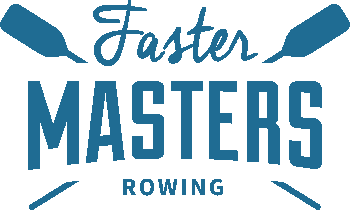Without a strategy your club will struggle to articulate goals, to align the disparate needs of members and coaches and to deliver a high quality rowing experience.
A strategy can by written by a board or committee, a sub-group or in a working session with members.
How should Clubs write a strategy?
First steps in writing a strategy for rowing clubs: a document
Be clear on what you want to do – why does the club exist? Have a “vision statement” by all means, but mostly I prefer this wording because it is clearer to members. Don’t forget your club’s history, but also look to the future.
A word of warning, don’t get lost in “We want a bigger boat shed / larger membership”. Something like “We are here to encourage people to row or achieve the best they can achieve” is probably what you’ll end up with.
Step 2 – how to apply the vision
Divide the statement up into roles – these could be departments and a committee or sub-committee jobs.
Then write a focusing statement for each one of these. Coaching – the vision statement for coaching could be “To provide opportunities for all potential coaches to reach the level of coaching they desire.”
The vision statements for each department should be similar to each other – don’t just leave the vision for the head of the organisation or Captain / Chairman.
Step 3 – getting things to happen
Then list a maximum of 5 things you want to achieve for a 3 year period.
Identify the three things you can do now. It might be the whole 5, if you are really resourceful, but focus on the top 3!
For these three indentify the skills and qualities you require in the people to lead each area and do the things that need doing.
The central group (a maximum committee size of 5) is your starting point, then identify the individual people the committee are going to approach with those skills. Matching the tasks with the skills is really important.
Go to each person with a well-prepared little pack explaining the situation and ensure that throughout their job/ tenure one person from the committee will be there to guide and support them throughout.
Committee people guide and support rather than doing the hands on work.
Who is doing this well?
Too often clubs sit there and wait for people to come and volunteer their services. When Australian sport was at its peak in the early 80s they were approaching people in just this way. That’s how they built the grass roots which led to a fabulous Olympics in 2020, 15 – 20 years later. In my view, England is probably doing better at this than anyone at the moment of writing.
Kiwi Sport came out of Australia’s “Aussie Sport” organisation. They were breaking things down into bite size chunks for all clients. This meant miniature versions for children e.g. rugby fields were smaller and netball goals are 8 feet rather than 10 feet off the ground so little girls could score. Made everything appropriate to a client group.
Step 4 – plan for the medium term
If you identify “departments” within the club to cover the main areas of activity (coaching, equipment, membership, social etc). Then make a list of things to do over the next 3 years. Ideally your list will have some things for this year/season and some that are for next and then year after.
It may be that you have 30 jobs to do on your list. To get these done, you must target 30 people to do the job; ideally each one with an assistant. Why so many? Well by focusing each person on a single task, you’re far more likely to get things done. If 30 people is too many or you don’t have that nubmer available, go for fewer tasks.
Why have an assistant?
The reason to recruit a young assistant for each task in your department is to get someone onto the team who helps for 2 years and then they can take over the whole job.
In theory every coach should have a young assistant coach. Every secretary should have a young secretary assistant.
If you think you can’t do this – you’ll be amazed how many young people are keen on this sort of thing but get scared off it – my friend’s daughters wanted to umpire netball but were told there was a 4 week course to learn first. However, I believe they could have been given small umpiring tasks alongside an experienced umpire and gradually cover the 4 week syllabus over a 2 year period.
So what about day-to-day running for your sports club / committee?
Have a written values statement that covers the purpose and philosophy of the organisation [that was step 1]. That becomes your “bible” and keeps everyone on track and answers most questions. If anything is presented to the committee, they can judge the proposal against this document which will show whether the proposal supports and furthers the aims of the club or not. Makes decision making easy.
Have a written contract with all members
In the contract document [which could be your membership application form] you put:
- the ethics of your organisation
- to support members
- to be honest
- to play by the rules
- not to criticise others
- no bad language
- respect the coaches, referees and umpires
- always be a good host.
Parents and children both sign the contract when they join. This should have a back-up statement covering:
- the role of a coach
- the role of a player
- role of a parent.
This sets out expectations and the boundaries of each role and prevents conflict.
Why do this?
The wrong reasons to write this is as a result of having troubles with parents arguing with the referee on the sidelines and it became confrontational.
The right reasons are to create a positive environment for everyone – create it as passively as you can – welcome people to the set-up and say we’d love to have you and here are our expectations.
Insights for masters rowing groups
Masters rowers are in an unique situation in many rowing clubs. They are often athletes, volunteers, parents, coaches and committee members. They run the club.
Most are selfless and deliver amazing services in pursuit of the club goals – often these are skewed towards the young (under 18) members.
As masters we are frequently members for many years – most children are members for 4-5 years; young people for 3-8 years by comparison.
Challenges masters groups face
- equipment purchases favour the young people’s needs
- expectations of volunteering and fund raising greater than other groups
- lack of coaching resource for masters
- lack of prioritisation of equipment for masters regattas over the demands of other groups
- expectation that the ‘best’ training times are not for masters
- lack of understanding of why masters row if they don’t also race
- social needs of masters are greater than other groups
All of which points to the necessity of having a plan for the whole club so that different groups’ needs can be balanced and priorities agreed and set.


